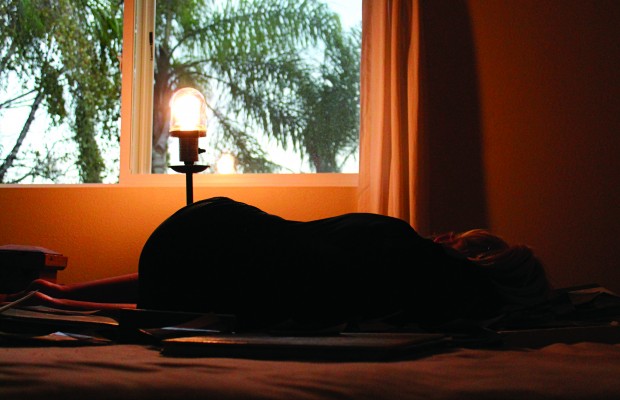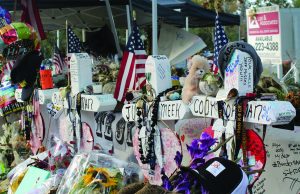Suicide

Do it for Jakeb: The struggle to unite and fight against bullying
“I think about Jakeb every day. That’s why I’m wearing this bracelet. It says ‘do it for Jakeb’. But every day, I think about his mom, I think about his dad, and I think about his baby sister, and his two brothers. My heart aches for them. It kills me to think what they’re going through, and to realize that they are never going to be okay. That’s what hurts the most. That’s what consumes me. Their baby, gone.”
Michael Conway, physical education teacher, will always remember his cousin Jakeb Norton, who committed suicide a little over a year ago. Conway saw firsthand how much love Norton’s peers had for him, and wants current students to remember that they can always find support.
When Norton’s family heard the news, they were in complete disbelief. Norton had been a straight-A student and showed no signs of depression. He had three younger siblings and supportive parents. “An hour before (we found out), they were out having a bonfire, it was his parent’s anniversary. And an hour later, he was gone,” Conway said.
In the aftermath of the tragedy, searching for a how or why seemed impossible. Conway and his family were convinced that it was an accident, or that Norton was under the influence. However, it was bullying that led Norton to take his life. “There were no early signs. We found out later on that he was being severely bullied through social media,” Conway said. “It makes me sick to think that (bullying) happens.” Conway’s family, including his niece, Madison Johnson, have responded to Norton’s passing by joining anti-bullying groups such as Rachel’s Challenge, a non-profit organization dedicated to creating a safe learning environment and starting “a chain reaction of kindness and compassion,” as stated on their website.
Conway believes that people can say “tiny little things that add up, and those tiny little things can break someone,” but he also thinks that little things can have a positive impact. He says a simple hello can change someone’s life, and urges students to be welcoming and accepting of others. “It doesn’t take a whole lot to ask someone who is by themselves to sit with you at lunch. That could end up being greater than anything you do in life–it may just end up being as simple as that.”
Whether or not his cousin felt loved or accepted by his peers, Conway said, his funeral spoke for itself. Hundreds of people, including classmates, were in attendance. “When you’re suffering so bad, you’re thinking about yourself,” Conway explained. “And whether or not you think that you’re loved, you are. You can be loved by your teachers, your peers, your families. There’s always people out there that love and care about you.”
Norton’s school responded to his passing by making bracelets, like the one that Conway wears daily, that reads “do it for Jakeb.” “These kids (at his high school) made these bracelets to spread the love that he spread,” Conway said. “He touched so many people’s lives.”
Conway wants students to know that they are loved, but also that they can find help from teachers or even professionals if they are suffering. He says that there will always be people to listen to students. “Don’t run away from it, don’t internalize it, don’t keep it inside. Be open about it,” Conway encouraged.
Coping with grief: how administration responds to suicide
In the event of a student suicide, the school follows a very specific set of procedures that aim to help students through the grieving process while at the same time respect the family’s privacy.
“The first thing is (to) communicate with the family and ask what their wishes are and how they want us to handle the situation as far as communicating with the school community,” said Principal Joshua Eby. “The second thing is to set up a counseling room, where any student who needs to come down and talk (can do so).”
The school’s grief rooms, which may take place in rooms such as the College and Career Center and library, are available so students can go see a school counselor or a school psychologist. The district also sends in counselors from other schools for extra support if needed. “We’re on-call; we wipe our schedules clean to be here (for the students),” said Lesley Drossin, counselor.
“Some kids just want to talk, some kids just need a quiet place, some kids just need a hug, and some kids, we understand, at that point, need to go home,” said Eby. “We provide a space that students can come if they’re not comfortable being in class at that point.”
Madhavi Williams, school psychologist, thinks it is important for school counselors and psychologists to be available to help students through the stages of grieving. “We have to be available for students to help deal with the experience by going into classes and providing crisis counseling,” Williams said.
Sometimes a family wishes to handle the death privately and if that is the case, “we understand that kids are going to know anyways, but we’re not going to publish any information,” said Eby. The counseling sessions would still be available for students who were affected, but the exact details of the situation would be left vague in order to respect the family’s privacy.
Williams added that the information provided to the student body depends entirely on the family’s wishes. “We always have to respect the family’s wishes and only use the information that the family authorizes the district to provide,” she said.
Once a student’s family has been contacted, the situation is handled on a case-by-case basis. Sometimes the school simply acknowledges that a suicide has happened, and offers support and counseling. “Other times we understand that everybody knows,” said Eby. In cases such as these, no large announcement is made. However, according to Eby, the administration does not “want to perpetuate situations where students don’t know something has happened.”
“It’s a very sensitive topic and as a school, we try to handle it professionally and understand that we need to be sensitive to our students and their needs,” said Eby.
Four years later…
Every November 21, I just think of her all day,” said Kylie Kelleher, junior. “It’s like I’m always carrying a backpack with bricks in it, like there’s this weight. It does get better, but the weight is never really gone. She’s always there. I just want to make sure this doesn’t happen to other people. I don’t want anyone else to ever feel this way.”
Four years ago, when Kelleher was in junior high, one of her closest friends committed suicide. After growing up together, the sudden absence was devastating.
“I started screaming and I don’t know how long I screamed for … eventually (the police) calmed me down enough to ask questions,” Kelleher said. “But … it’s hard to answer (questions like) ‘what type of music did she listen to?’ when I’m hearing that she’s gone.”
The next day at school, Kelleher was confronted with several different types of reactions. “A lot of people were really kind to me,” Kelleher said. However, not all of the responses were as positive. “There were some kids making jokes about it, and that really hurt.”
Although she was able to find support from her friends and counselor, Kelleher believes the school could have handled the situation better. When grief counselors came in to talk with the friends of the deceased student, Kelleher found that her peers took advantage of the situation to cut class.
In addition to bringing in grief counselors, the school also distributed a formal letter about the incident to the students. When Kelleher saw the flier, she said, “I freaked out in my PE class and they had to escort me out, because I started screaming again. You can’t address losing someone, especially someone so young, with a piece of paper. I think they completely underestimated how big it was.”
Her other contention was that “it seemed like they addressed her death the day after it happened — on the 22nd, that Monday — and then they just never talked about it again,” Kelleher said.
For the first two years, Kelleher’s coping mostly consisted of crying. “I was sad more than anything. I didn’t really feel anything other than sadness until freshmen year. Then, I got angry … I was just so mad, because I couldn’t understand … even now, sometimes I’ll be sitting in class and I’ll start thinking about it. It’s not something you forget. I’ve grieved, but I still think about it.”
Today, Kelleher believes that suicide should not be romanticized or taken lightly. Even though the act could be viewed as selfish, Kelleher say, “I think that suicide is not thinking clearly. It’s reaching this point where you need help, but you’re not going to ask for it anymore. You’ve come to a decision and that’s what it’s going to be. I think it’s a mistake, and I think people who get a second chance have a chance to realize there’s more to it than that.”
For students that are struggling with suicidal thoughts, Kelleher said, “Don’t think that anything is permanent because you’re constantly changing. We all grow and we all change and we just get stuck in the moment. We’re teenagers, we should get stuck in the moment, but we should get stuck in the good moments, not the bad ones. If you’re struggling, just remember that you mean something to someone … even if that person is just me, you mean something to me and everyone else. Every life has so much more impact than you think.”



